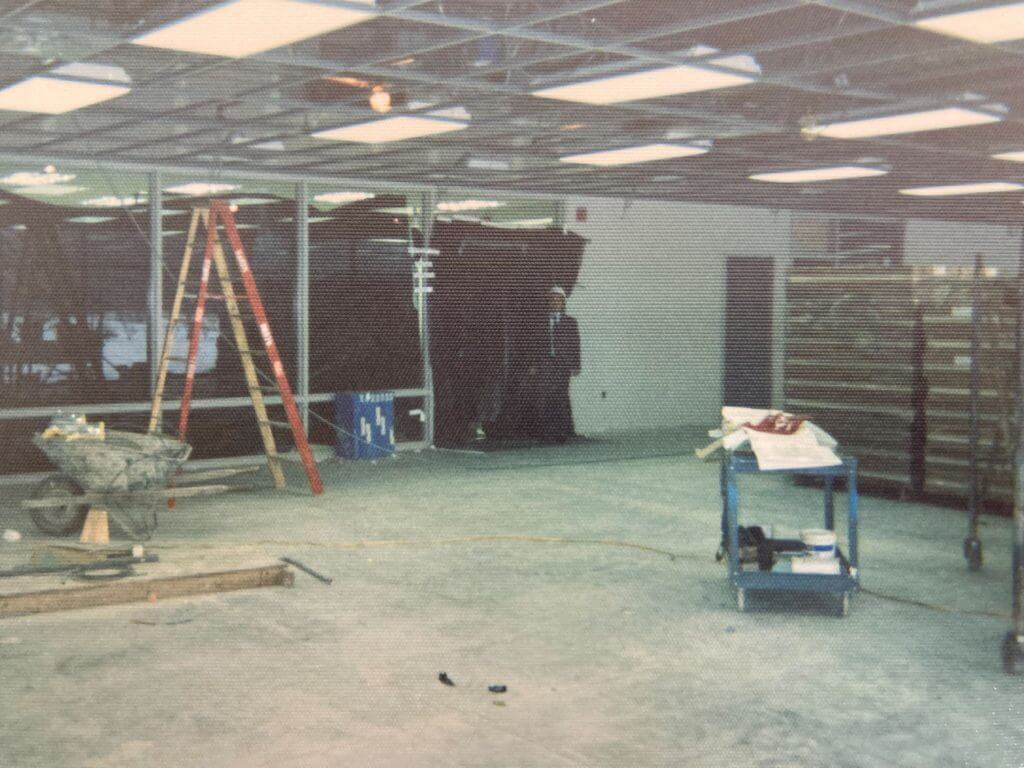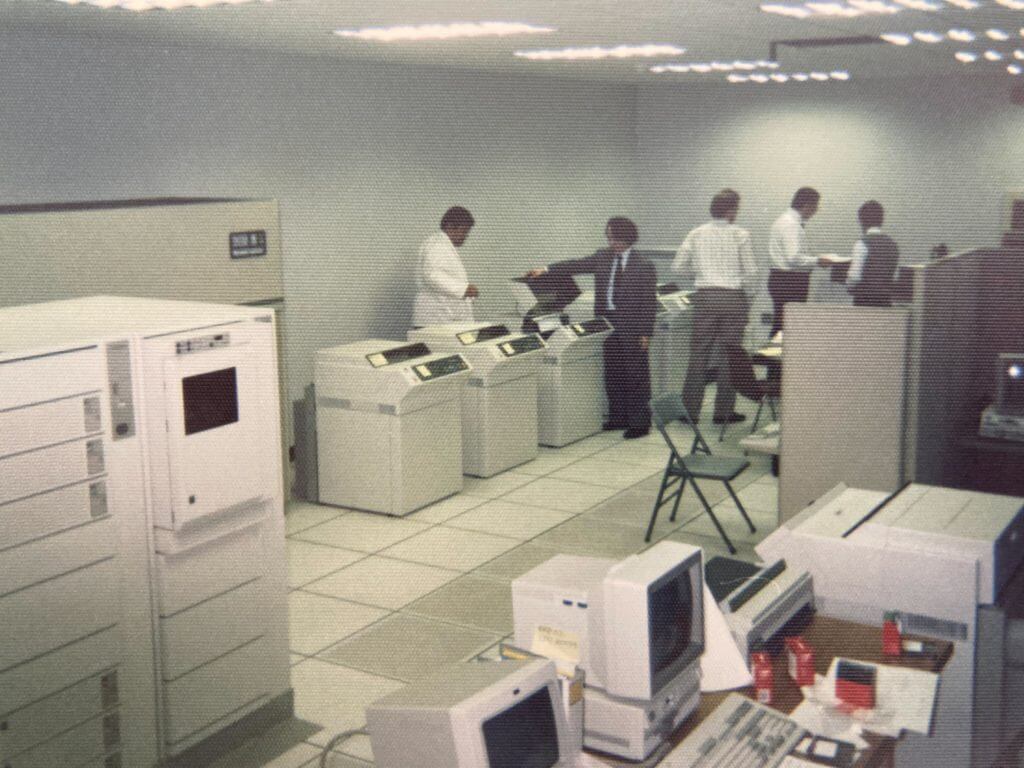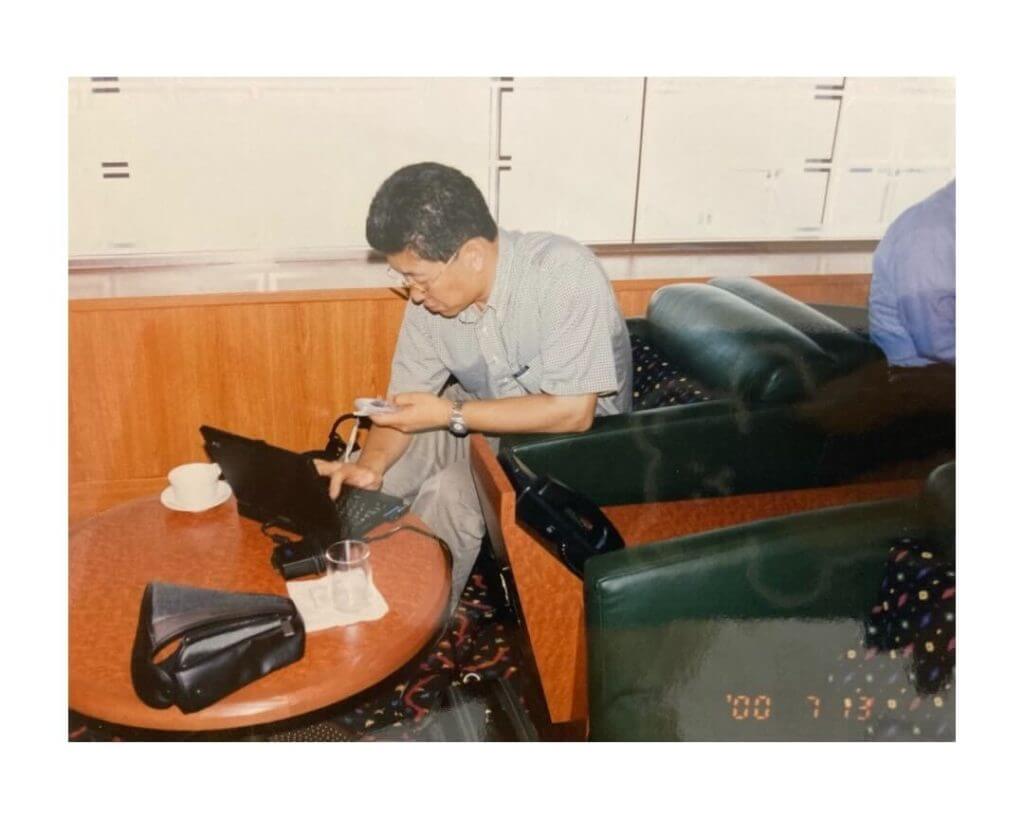【INTERVIEW】Innovative Solutions CEO Yutaka Hosoe
2021/12/17
Author: Chanisara Kajornchaikul
This is an exclusive interview with Yutaka Hosoe, CEO of Innovative Solutions inc. (ISOL)

Yutaka Hosoe is the Chief Executive Officer of ISOL. His professional career started in 1983. He was a manager in the IT department of Toyota Industries Corporation, where he developed and planned WMS and MES. In 2001, he was a director of EXE Technologies Japan. Two years later, while working in a Japanese e-commerce venture in 2013, he became the sole distributor of Manhattan Associates (MA) from the U.S. In 2005, Yutaka Hosoe became the representative director of a Chinese offshore development company. He successfully merged the company to NTT DATA in 2011 and became vice president of NTT DATA China Outsourcing. In 2014, Yutaka Hosoe sensed the declining population crisis in Japan; he believed that improving productivity with IT systems is the key to dealing with this crisis and founded ISOL, and that became ISOL’s mission.

Hi everyone, I’m Chanisara, Associate DX Consultant at ISOL. Today I’d like to introduce you to our CEO, Yutaka Hosoe, through an interview. He shared many interesting stories on his path to today. I enjoyed his entrepreneurial spirit. Even if he faced the global recession crisis and the economic bubble burst, he overcame tough times and always kept up the challenge.
So let the interview start!
Would you please explain your earlier work experience in the manufacturing industry and how you began to work related to IT?
I originally graduated from the Faculty of Law. In 1983, I started my career at Toyota Industries Corporation in Aichi Prefecture. Due to my interest in Monozukuri (the Japanese word for production or making things), I decided to work in the manufacturing industry. After joining the company, I took an in-house test, but my grades were not good… (laughs). At that time, everyone who had nowhere to go was allocated to the information systems department, including me.
How was the IT department back then?
There was only one large mainframe computer. Because computers were becoming more widely used at that time, office computers were distributed and installed in the factory. I was in charge of installing computers to forklifts or the industrial vehicles division. Generally, computer systems were mainly used for payroll and accounting, but when deployed in factories, it was still an early stage to use a computer system to keep track of shipping and production control.
What was your greatest challenge at the time?
It was an era when no one had studied computers in university, so no one knew the correct solution. It was like, “learning through trial and error.” It was tough, but it was also a good experience, great that the company had allowed us to fail or make mistakes. From there, I developed various systems using personal computers, however, I could proceed without any difficulty because I already had the experience of repeated trial and error.

What had you done after deploying computers at an industrial facility?
During that time, Japan was in an economic bubble, and the United States was in recession. There was a trade dispute between Japan and the U.S, A Toyota Corolla vehicle was sometimes smashed with a hammer during a demonstration in Detroit city. Since then, a 40% tariff was imposed when exporting a forklift from Japan to the U.S. We had to build a factory in the U.S., and I had helped set it up since the factory management required computer systems. The great thing was that Toyota Industries trusted young employees to run the project without a boss!
Did you go to the U.S to challenge new things by yourself?
The computer division (developing systems and installing the computers in the factory) was started up mainly by 4 employees (including me) who had been in the company for 6 to 7 years. The company lets the young people challenge and fail while still at junior level and learning how to make their own path. Luckily, this project was successful.


Do you think your past experience benefits you in the present?
It does! I’m thankful for that experience. I have had no problems working with overseas partners since then. It was pretty tough to go back and forth between Japan and the U.S in the short term, but it was a lot of fun.
Did you come back to Japan after the project was complete?
I came back to Japan at the peak of the economic bubble. However, the manufacturing industry was not as popular as the finance and real estate industries since it was a 3D (dirty, dangerous and demeaning) job with a low monthly salary compared to other sectors. Because hiring many people was difficult, those employed were assigned to sales and development, which was the manufacturing industry’s original business. Since there were no designated staff in the information system department, my colleagues and I were asked to establish an IT subsidiary.
It must have been a challenging time.
Did you start a subsidiary while working at Toyota Industries?
That’s right. We established Toyota Industries IT Solutions Inc. in 1991. But soon after, the financial bubble burst. I remember that we need to bow down to the parent company to get a job. However, I actually enjoyed that hardship!
Wow! I could not imagine. How could you enjoy it?
That’s because you could gain the experience of starting a venture business without any personal risk. I didn’t have a boss, so I could do whatever I wanted (laughs). Of course, if I made a mistake, it was going to be all my fault. However, I felt reassured that I could return to the original company even if it didn’t work out in the worst case.
What kind of job did you mainly do then?
It was related to my current job. We had developed an execution system for manufacturing and logistics sites, and were responsible for production control in the forklift department, construction of a new distribution center, and systems for all production lines.
What was the most exciting job at the time?
The biggest and most challenging job was building a warehouse management system (WMS) and an order management system for Kaunet, the mail-order business that KOKUYO started. The plan was to launch distribution centers in Tokyo and Osaka simultaneously with a 5 month lead time and launch other distribution centers in the Nagoya and Kyushu areas every 3 months. I spent around ten years with the subsidiary at this point. Soon after, I was requested to return to the parent company.

You spent more time at the subsidiary than the parent company, didn’t you?
Indeed. I wanted to learn more about IT, so later I decided to leave Toyota Industries. I got an offer from a company called EXE Technologies (EXE), the WMS package software I adopted when launching the distribution center for Kaunet within a very short lead time . At EXE, I met Mr. Kinoshita, one of the current co-founders of ISOL.
However, with the IT bubble burst in 2001, the economy of IT venture businesses like EXE suffered. I left EXE and joined a Japanese EC software venture as the general manager of the development division. The development manager at that time was Mr. Yokoi, who later became one of the co-founders and CTO of ISOL.
Finally, the three current founders' paths crossed!! What did you do at the EC software venture?
This EC software venture needed to be rebuilt, but it was not simple. In the U.S., there was an enormous logistic problem where gifts ordered online did not arrive on Christmas day. Therefore, we decided to expand and strengthen the logistics function. When Manhattan Associates (MA) decided to expand into Japan, I approached and asked to become its partner. The founder chairman of MA said, “I’ll leave it to you” (laughs), then I became the sole distributor of MA. After a year, because I couldn’t see any synergistic effects with EC and logistics. So I decided to quit the venture and started my own consulting business. Honestly, it was a painful management experience at this Japanese EC venture, but I reaffirmed the importance of financial statements (BS / PL) , especially the importance of the Balance Sheet.
After you started your own business, what did you do?
Because MA launched a Japanese subsidiary, I helped its pre-sales and assisted the Japan Management Association(JMA). While working for the JMA, there was a request to introduce the Toyota Production System to a Chinese factory, where I provided consultation. Eventually, they wanted to build the system, so I designed and outsourced development work to an offshore company, where I later became vice president. Despite the success of the project in China , other business offers that we received in Japan while I was away in China were not good. I became president when it was about to collapse.
You suddenly became president!
I was appointed to the position before I knew it. Since I moved to Tokyo from Aichi prefecture, I have been rebuilding company after company! Then, the 2008 global financial crisis came. Despite experiencing various crises, such as the financial and IT bubble burst, the global financial crisis was the only crisis that accelerated rapid business growth. There were spaces where we could grow regardless of the economy. Luckily, offshore businesses were ideal for companies wanting to save money when developing a system.
You encountered many events and had bitter experiences, but it led to better results this time.
I realized that there were spaces where we could grow regardless of the economy. At that time, I was not the owner, but the owner wanted to sell the company to the NTT Data group. I was a mediator assisting both parties’ interests. Three years later, in 2011, the offshore company was merged to become NTT DATA China Outsourcing Corporation and I became vice president. However, I was shocked by what my ex-colleague said…

What did he say?
He asked me, “Why did you quit Toyota Industries if you were to reach only the vice president level of a subsidiary company?” I think there was an easy path from then onwards if I chose but I decided to take another challenge and started ISOL in 2014.
Some casual talk with an ex-colleague became the beginning of ISOL (laughs).
But what was your motivation for establishing a business?
There was a sense of urgency that we had to improve productivity in Japan, with a declining population.
Where did that sense of crisis come from?
Even in the manufacturing industry, return on investment (ROI) analysis was necessary to justify the cost in implementing an IT system. A board member of a company once asked me, “What should we do with those five people whose job has been made redundant by introducing this system?”. I then realized reducing headcount did not improve productivity or reduce costs. With a declining population, productivity was the key for all areas.
Business process standardization is one of the most important skills one could possess. You could utilize this knowledge in production, logistics, finance, sales, accounting, or any other area. People will often reflect current issues to newly developed systems before standardizing processes, hindering productivity improvement.
Thus, I believed that empowering individuals should be the basis for increasing productivity, and I wanted to build a business that could enhance that. Also, I have been frustrated by the fact that IT professionals are underrated in Japan and. I thought I had to take action to raise the social status of IT professionals.

Why was the IT industry so appealing to you?
There are two reasons. First, the IT industry itself has no direct business but you could provide value to various sectors since all sectors somehow utilize IT. It was fun to collaborate with other businesses. Another reason is that you could become a platformer. Don’t you think it’s fun to design a platform that can attract users who have many perspectives and backgrounds? I appreciate the fact that IT enables the creation of a place where people with opposing viewpoints could collaborate.
What are the challenges of being a CEO?
If you want to be the CEO, you’d start early (laughs) so you have the energy to be active l! Doing what you want to do means taking responsibility for what you do. If you take on challenges, you may fail sometimes. But, if you keep it up , you will get to know your capacity and later fail less. So even if you aren’t the CEO, I want you to lead a project. You have to accept responsibility for your life anyway so take it now (laughs)! Often, there will always be people reaching out to help those willing to take on responsibility or hard work. You will be vulnerable if you do not have risk tolerance. That’s why I want you to take on challenges.
The words of Hosoe, who has taken on the challenge, have a lot of weight.
What is ISOL's vision for the next 10 years?
From the customers’ point of view, I want ISOL to be a company that clients want to work with and an interesting workplace for its employees. To be such, all employees have to be interesting people (laughs)! When ISOL was founded, we started with something the three founders could do and offer. I want young employees and those wanting to join ISOL to take on challenges. If they want to accomplish something, I’ll provide an environment where they can challenge themselves. I want them to be free from the faculties and departments they studied at.

I’d do my best to make ISOL an interesting company! (laugh)
What about your private life?
How do you spend your time outside work?
I usually relax with my family over meals on weekends. Toyota Industries was a stable company and gave me a good salary, but I wanted to quit and come to Tokyo. I was thankful that my family did not stop me and let me take on the challenge of doing what I wanted to do. Other than that, nowadays I enjoy playing golf with my close friends/coworkers in natural surroundings. Also, I have become a whiskey enthusiast since I relocated to Tokyo.
You have a whiskey collection, right? What is the appeal of whiskey?
Whiskey has a complex taste. Even though it is made simply out of water and barley stored in barrels, each whiskey tastes completely different. One of the taste factors that determines its taste would be the distillery’s environment or the predecessors’ work. Whiskey prepared today may be consumed 30 years later. I really admire that kind of behind-the-scenes story a whiskey may have. Someday, I want to visit a distillery in Scotland.
I see. I’ve gained a fresh perspective on whiskey! How do you maintain your work-life balance?
To be honest, up until recently I haven’t been able to maintain a good work-life balance (laughs). I have been work-oriented and sacrificed my time to be with my family because my main business has always been systems development. System conversion inevitably has to be done outside operational hours, or during system downtimes. Since working in the early ‘80s, dependence on systems has increased drastically. I was working during many of the long holidays such as Golden Week, summer vacation, and other holidays. I am also concerned that nowadays it is difficult to secure enough IT professionals so that many IT related jobs that run/maintain business operations are highly dependent on a limited number of people and leading to long working hours.
Do you think IT professionals will be able to maintain a work-life balance in the IT industry as well?
Yes. There are a lot of new technologies making it easier to build new systems, such as automatic code generation & testing, containerization, and so on. Businesses can be kept running while new systems are being developed and it will keep getting better in the future. However, a process may be required to maintain systems just by making minor changes so that changing the entire system at once is not required.
Recently, IT itself is becoming a profitable business with the rise of platformers. The added value of IT is increasing as it becomes a field that enables people to create new business models all over the world. One important management KPI in conventional industries is the operation rate. This KPI indicates how well a company is capitalizing from its human resources and facilities. I believe that the importance of operation rate will not be emphasized in the coming future.
